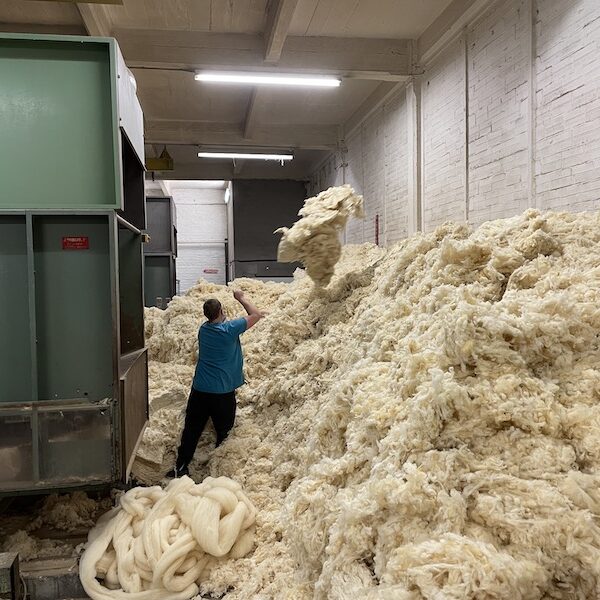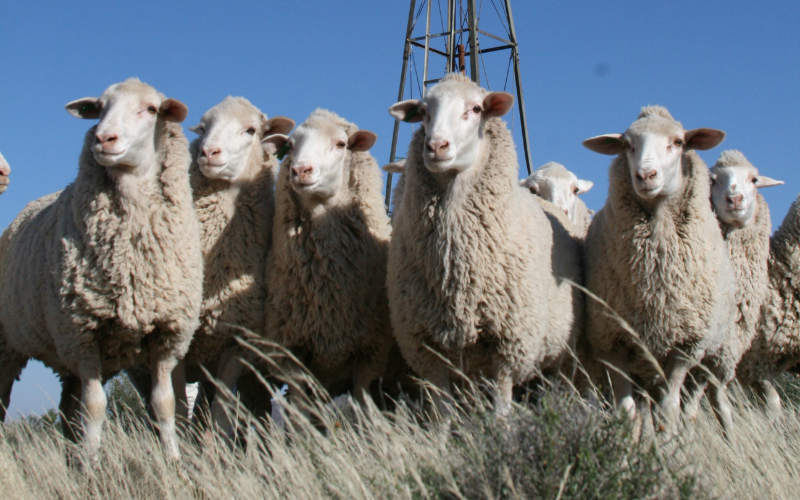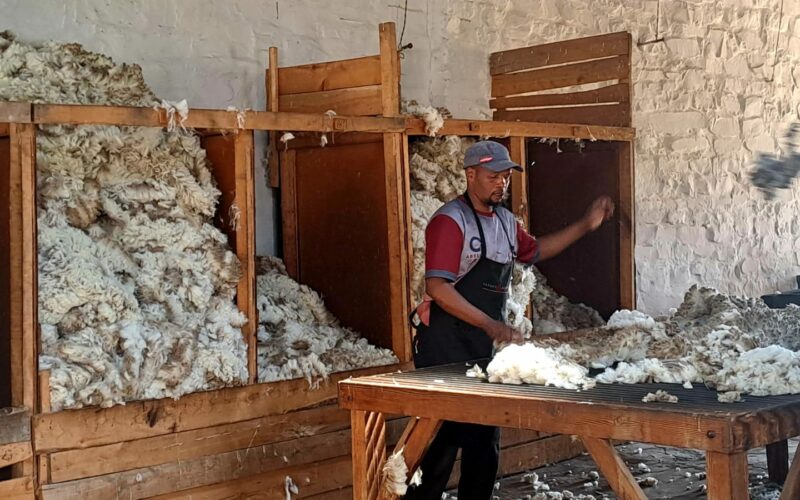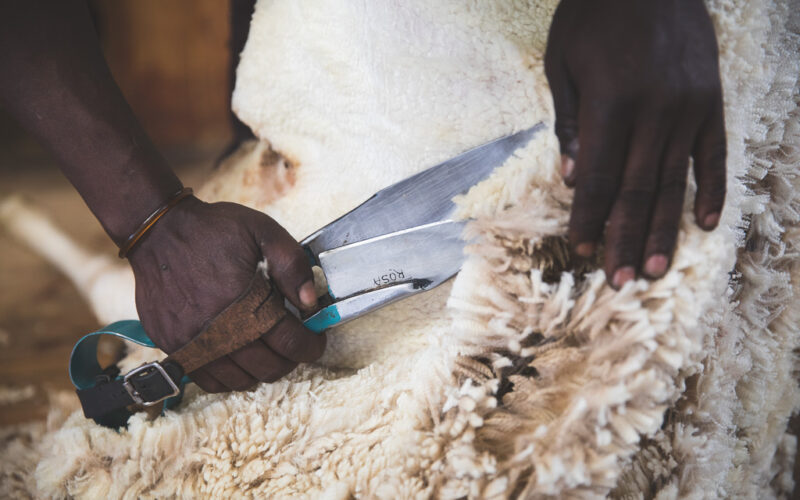The wool selection process is as important as the shearing of the sheep. Not so long ago, French wool was left to its own devices, even burnt as it was deemed unusable.
Today, the good news is that the collection of wool, supported by local breeders and associations, is becoming more and more frequent throughout the country. A wool collector then comes to buy and collect the wool to supply it to French manufacturers and craftsmen. This is a meticulous job that requires know-how and an excellent knowledge of the product, its properties and qualities.

Shearing and sorting
Before it can be prepared and sorted, the raw wool is collected and picked up by a wool collector. The washing and sorting processes are carried out directly after collecting the wool from the farmers. The wool is sorted by hand to remove plant material such as straw. The wools are collected and sorted according to their specificities. They are then washed and ready to be processed directly by the cooperative or sold to other players in the industry depending on their properties and desired uses: tapestries, quilting or spinning.
Collecting, a profession in its own right
The collection of raw wool is generally carried out by an independent wool collector or by a cooperative or association.
The first step taken by the wool collector is to go to the breeders.
Then, the collector weighs the raw wool which has been packed in bags. The bags of raw wool are weighed by the wool collector using a Roman scale. The price per kilo varies according to the type of wool and its demand on the market.
Once the weighing is done, the bags of wool are loaded directly into a truck and sent to the processing stages.
In general, professional wool collectors collect raw wool once a year after shearing. A collection can sometimes exceed one ton depending on the number of sheep and the size of the farm.
However, on smaller farms, farmers who do not produce the same volumes of wool, approach cooperatives and associations directly to either donate wool or to find processors who are able to work with smaller volumes of wool.




